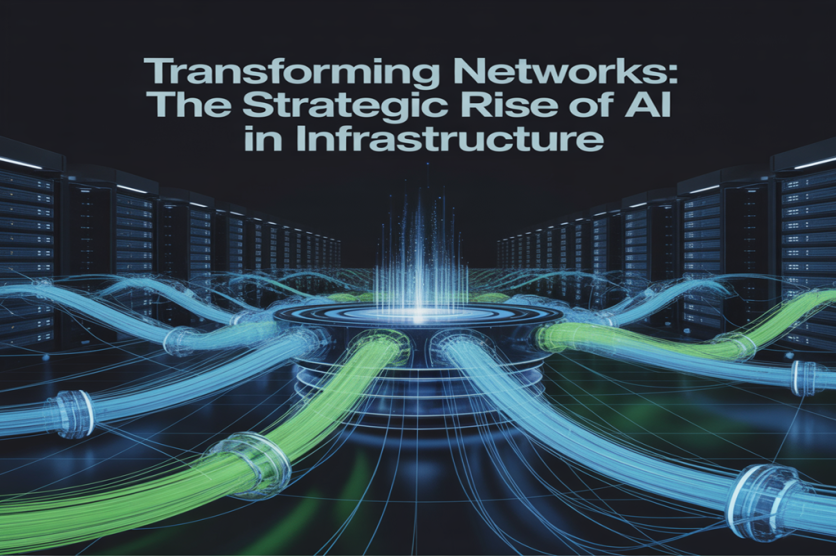
Prasanth Kosaraju, a seasoned technology expert, outlines the evolution and implications of artificial intelligence in industrial network management. With experience in next-gen infrastructure, he highlights how AI is not just automating routine tasks but redefining how networks learn, adapt, and protect themselves.
From Rule Books to Smart Brains
Network infrastructure has historically relied on rule-based systems, where human oversight was integral and error rates were high. By the mid-2010s, machine learning began streamlining traffic analysis and performance monitoring. Today, deep learning powers self-optimizing networks, predictive maintenance, and real-time analytics. These AI-driven networks no longer wait for issues to arise; they anticipate and act, often without human input.
Smarter Maintenance and Configuration
One of the most transformative innovations lies in predictive maintenance. Rather than reacting to failures, AI uses real-time data to forecast equipment degradation, reducing downtime and extending hardware life. Similarly, AI-driven configuration management ensures networks remain consistent and compliant. Automated tools now detect and fix configuration drifts across complex, multi-site systems, relieving administrators of routine checks.
Security with a Sixth Sense
AI is significantly raising the bar for network security. Traditional systems depended on predefined threat signatures. In contrast, AI models learn what normal behavior looks like and flag anomalies, sometimes even when stolen credentials are used legitimately. These systems don't just detect threats; they neutralize them by isolating devices or updating firewall rules in real time, compressing response time, and reducing risk exposure.
Efficiency Across the Board
AI's contribution isn't limited to alerts and fixes. It enhances traffic optimization by dynamically allocating bandwidth based on priority and congestion levels. From reducing latency in IoT-heavy environments to boosting throughput in high-demand scenarios, the technology ensures peak performance. Industries using these capabilities report noticeable reductions in jitter and improved reliability, translating into significant operational gains.
The Flip Side of the Coin
Despite these advances, AI integration isn't plug-and-play. Legacy systems often resist seamless incorporation, especially when equipment varies in age and vendor. Furthermore, AI's probabilistic nature introduces trust issues, especially when engineers can't decipher why the system made a particular decision. False alarms during early phases can cause "alert fatigue," leading teams to dismiss real threats.
Security Pitfalls and Compliance Complexity
AI also introduces its own vulnerabilities. Attackers are now crafting data patterns to exploit weaknesses in AI models, a new battlefield in cybersecurity. Meanwhile, the data required to train AI systems often clashes with privacy mandates, especially in sectors governed by strict regulations. While anonymization helps, it may dilute the data quality needed for effective learning.
Cost Matters, but So Does Timing
Financially, AI implementation demands significant upfront investment. While long-term savings are real thanks to reduced downtime, fewer manual interventions, and smarter resource usage, the return on investment can take years. For smaller organizations, these delayed returns may deter adoption, especially when traditional ROI models fail to capture cross-functional gains.
Crafting a Thoughtful Rollout
The path to success lies in deliberate planning. Organizations that begin with narrow pilot programs targeting high-impact use cases see faster validation and stronger buy-in. Combining AI with human oversight, rather than going full automation, ensures smoother transitions. Investing in staff training and developing clear governance frameworks further enhances outcomes. Leveraging mature vendor platforms can also ease deployment by reducing development overhead and offering tested models.
What's Next on the Horizon
Looking ahead, the most promising innovations aim to address today's limitations. Self-healing networks could soon not just detect but also autonomously fix issues, even during off-hours. Federated learning presents a way to train models without compromising data privacy by keeping data localized. Quantum networking, still in its infancy, will need AI's power to manage its immense complexity. Finally, explainable AI tools that show why a decision was made are emerging as a key to earning trust, especially in critical infrastructure.
In conclusion, the integration of artificial intelligence into network systems is no longer theoretical; it's redefining how industries approach reliability, performance, and security. But these gains come with challenges that demand strategic planning, cultural adaptation, and a commitment to transparency. As emphasized by Prasanth Kosaraju, organizations that embrace a balanced path combining innovation with prudence will lead the charge into an era of truly intelligent infrastructure.
ⓒ 2025 TECHTIMES.com All rights reserved. Do not reproduce without permission.




